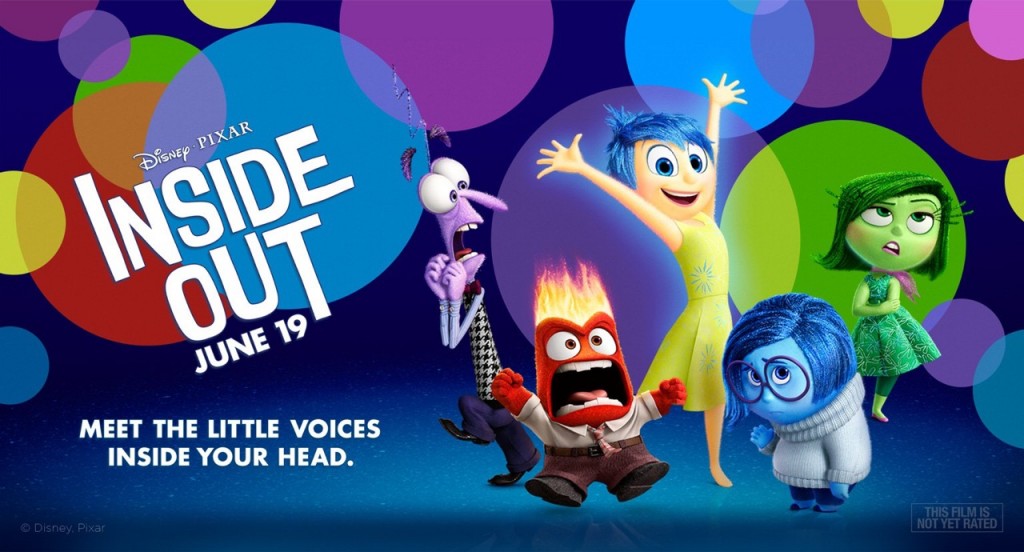Inside Out is a movie about an 11-year-old girl, Riley, who moves from Minnesota to San Francisco with her parents. Ironically, Riley is not the main character, but a vehicle to tell the story of the main characters – her emotions. Her emotions – Joy, Sadness, Fear, Anger and Disgust – also happen to be the universal emotions commonly experienced by all human beings, with only surprise being left out of the story line.

Psychologist Paul Ekman is the pioneer responsible for discovering these universal emotions. As he traveled the globe he found that these six emotions were present in every culture and presented in the same way through the same facial expressions around the world. Our emotions developed throughout our evolutionary history as rapid information processing systems that helped us navigate our environment. That is, emotions evolved to help us cope with events and situations that had consequences for our immediate welfare.
If humans didn’t have emotions, we wouldn’t know when to attack, defend, flee, care for others, reject food, or approach something useful, all of which were helpful in our evolutionary histories, and continue to be today. We cannot think of life today without emotions, because without them we wouldn’t be here.
The film accurately depicts how Riley’s emotions are useful for her development. Disgust keeps Riley safe from being poisoned, Fear keeps her safe from a catastrophe by imagining worst case scenarios, Anger protects her from others, while Joy ensures that she is happy. Throughout the film, these emotions demonstrate the difficulties of leaving childhood and entering adolescence. At just 11 years old, Riley is on the cusp of puberty and faced with the challenge of moving to a different city, away from her friends, and away from her hockey league. On top of that she absorbs the stress that her parents experience from the difficulties of adjusting to a new city and struggling to pay the bills. Like most children still learning to identify and understand their emotions, Riley tries her hardest to be happy. This guise, however, does not take long to begin unraveling. The film then takes us inside Riley’s head to understand how this happens from the Inside Out.
Of all 5 of Riley’s emotions, Joy seems to be the leader; she keeps the others in check but reminds the viewers that all of them have an important function. However, Joy fails to see the importance of Sadness and tries to shoo Sadness away from anything Riley-related, forbidding this emotion in every way possible. She even draws a circle on the floor and makes Sadness stay inside it, forbidding her to leave or to touch any of Riley’s memories, so as not to taint them.
As if Riley’s mind trying to keep Sadness at bay wasn’t enough, Riley’s parents put an additional pressure on her, especially when her mother asks her to “keep smiling” for her dad. Essentially, Riley’s mom, without meaning to do so, communicates to Riley that being sad about the move is not ok. Unfortunately, Joy’s good intentions backfire when Riley is unable to receive the support she so desperately needs to help adjust to her new environment.
As Riley has a hard time coping with her move, she withdraws from her parents and old friends, she misses school, and even tries to run away. Unable to experience her sadness about all these changes and pretending that she is ok, Riley ends up angry, anxious, and irritable, getting into a fight with her parents and her best friend, before shutting down altogether.
What can we learn from this movie?
All of our emotions are important. They all serve a function, and we cannot selectively feel some but not others. It’s an “all-or-none” deal. If we numb sadness, we also numb joy. We need to openly experience all our emotions, and that includes sadness, as painful as it may be sometimes. Sadness allows for connection, when we see someone else feeling sad, we might feel sad too and might want to alleviate their sadness. When we stay with this individual and share our emotions together it can produce a healing experience. That is exactly what we see when Riley is able to share her sadness with her parents.
In fact, when we are sad, our body and facial expression cue the people around us that we need help – the tears running down our face, the pupil dilation, the non-threatening posture – all of this signals to others that we could use some support. And at the same time, the people around us might then experience a bitter-sweet sensation of compassion, caused by an activation of the compassion centers of our brain, and the warmth of the heart caused by a release of the love hormone, oxytocin.
Inside Out ends by reminding us that we can experience multiple emotions at the same time, such as happiness and sadness, and that it is perfectly normal and healthy to fully experience all of our emotions, even the ones that make us feel uncomfortable. As human beings we all experience these emotions universally. Next time you feel alone in your struggles, remember that other people are just like you, and simply sharing what you’re feeling could offer the best solution.
 *our subscriber goal
*our subscriber goal